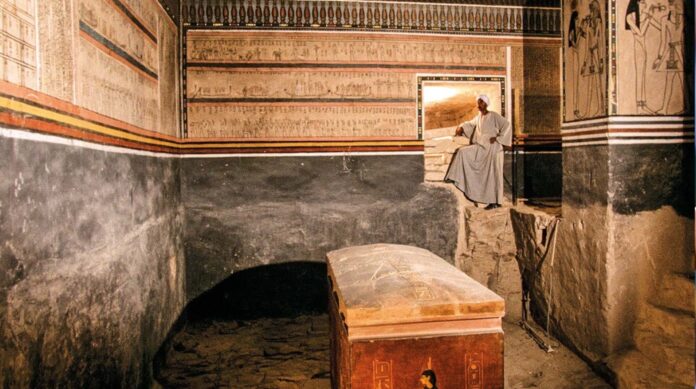In a significant archaeological discovery, a joint Egyptian-British team has unearthed the ancient tomb of King Thutmose II near Luxor, marking the first pharaonic royal burial site found in over a century, Egypt’s Ministry of Tourism and Antiquities announced on Tuesday.
Situated west of the famed Valley of the Kings, this significant find ends the search for the last lost tomb of Egypt’s 18th dynasty kings. It’s the first royal tomb discovery since King Tutankhamun’s in 1922, the ministry noted.

Archaeologists identified the tomb through alabaster vessels bearing the names of King Thutmose II and his wife, Queen Hatshepsut, one of the few women to rule ancient Egypt. The excavation also revealed fragments of funerary furniture, along with pieces of mortar adorned with blue inscriptions, yellow stars, and religious texts.
Despite the excitement surrounding the find, the tomb’s preservation has been compromised. Flooding shortly after Thutmose II’s death led to significant deterioration, and many of the tomb’s original contents appear to have been relocated. Recovery efforts are currently underway.
This discovery sheds new light on Egypt’s 18th dynasty and offers fresh insights into the burial practices of ancient Egyptian royalty.




